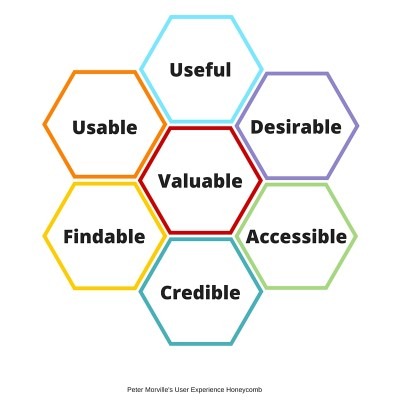Article's Content
If you’ve done any research into SEO, you’ve likely found that the typical approach looks something like this:
Keywords + meta descriptions + title tags = higher rankings
In fact, this may even be the formula that your company has adopted for their SEO strategy.
But is this approach really enough?

It may have been at one time, but not anymore.
Often people assume that having a good user experience (UX) is just a bonus when it comes to SEO, but in reality, a good UX is a necessity.
In this blog post, I’m going to break down exactly why you need to improve your UX in 2020 and stop assuming it’s a nice-to-have.
Let’s get to it.
What’s the connection between SEO and the user experience?

There are hundreds of factors built into the ever-evolving search engine algorithms. What used to impact search engine rankings may not hold the same weight today.
Search engines aren’t just serving up content to answer our questions; they’re also collecting data on how people are interacting with all this content.
Google mines for data with every search—which yields a whole lot of data since there are 3.5 billion Google searches made each day.
Essentially, all the metrics being tracked in Google Analytics are accessible to Google and, according to their Privacy Policy, they use that data to improve their services—for example, their search engine.

Google is gathering data like time spent on your site, bounce rates, return visitors, pages per session, etc., to determine whether your site is a user-friendly resource—which then factors into your search ranking.
Search engines continually evolve their algorithms based on user behaviour data, and in the last decade, the user experience has become ever more important. Most notably, Google’s Panda update (2011), Hummingbird update (2013), and RankBrain update (2015) now give you a higher ranking if you have a more user-centric approach.
An approach that only focuses on keywords and metadata doesn’t cut it.
As search engines continue to update their algorithms and become more human-centred, the boundaries of traditional SEO continue to blur.
Taking a human-centred approach
UX goes far beyond giving users what they say they want and focuses on understanding them—what they need, what they value, their abilities and their limitations. Peter Morville’s User Experience Honeycomb highlights the elements of a good UX:

Does the user care about your content?
Usefulness, value, and credibility all relate to the content you’re delivering. Does the content answer their questions? Does it provide value? Does it convey expertise? If it has no purpose to the reader, they’re not likely to engage with your content, continue to explore your website, or become return visitors.
Can the user easily accomplish their goal?
Usability refers to the ease of use. If your website is difficult to use, people won’t stay. Someone should be able to complete a task or find information on your website without needing to ask for help or feeling lost. One of the best ways to assess how usable your website is is to conduct usability testing with real users.
Can the user access all of the information and functionality?
Accessibility refers to the experience of people who are affected by some type of impairment or disability, which could be physical, non-physical, permanent or temporary. All users deserve to have equal access, without barriers. It’s easy to assume that your visitors can use a keyboard, mouse or touchscreen to interact with content the way you do, but this assumption can lead to an experience that works well for some people and results in significant challenges for others.
When you’re ready to start applying accessibility best practices to your website, the How to Meet WCAG (Quick Reference) is a great resource.
Is the user happy about the experience?
Desire is how users feel about each interaction. This is usually evoked through visual branding, aesthetics and emotional design. For example, you can use a marketing gamification platform to add interaction and arouse user interest. It doesn’t matter how fresh and relevant your content is—if your design looks dated, a user won’t feel the excitement (and will likely assume that your content is dated too).
Can the user find what they’re looking for?
When it comes to your website, being findable is two-fold. There’s a direct tie to SEO tactics here, but it’s also about your internal information architecture (IA) and navigation. Once someone lands on your website, they should have a clear understanding of where they are, where to go and what to expect.
Taking a human-centered approach means creating more meaningful interactions by focusing on what the user needs and expects from your website.
Simply by understanding the elements of the UX Honeycomb, you can see how ignoring UX will negatively impact how much time a user spends on your website, how many pages of your website they explore, whether they value your content enough to return, etc.
If any of these elements is a weak link, it’ll be challenging for your site to achieve high rankings.
UX + SEO = higher rankings
There are many tactics that contribute to the success of the UX honeycomb, and many tactics that improve SEO, but there’s a lot of cross-pollination. What improves UX often improves SEO, though not all SEO tactics improve UX. For example, ensuring that you have a Robots.txt file to tell search engines how to crawl your website and submitting your sitemap to Google Search Console are both important tactics for SEO, but they don’t impact the on-page experience for your user.
When you start with UX, you’ll be shifting your focus from pleasing search engines to pleasing humans.
At the end of the day, search engines aren’t your customers—humans are, and it only takes them 0.05 seconds to form an opinion about your website.
Get ahead of those search engine algorithms.
Start by optimizing for humans, then optimize for search engines, not the other way around.
Wrapping things up
It’s clear that we can’t ignore search engines—that’s how people find our content. But if we’re not prioritizing the experience our users have after they land on our website, our SEO efforts won’t get very far.
Stop underestimating the importance of UX in your SEO strategy; the user experience is critical to success.
Take time to educate yourself on the elements that contribute to UX, assess the current state of your UX, and leverage best practices to better position your website for the humans using it. Before you know it, you’ll find your SEO and UX strategies becoming intertwined.
Still have questions about the impact UX has on SEO? Get in touch with our team.








